|
Monocacy Page6 Photos/text this page courtesy of Craig Swain, Leesburg, VA For any use of these photos contact Webmaster |
||
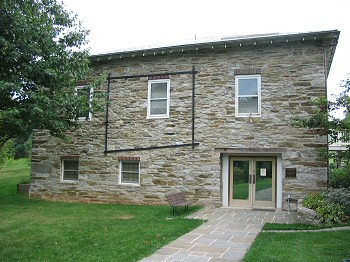 |
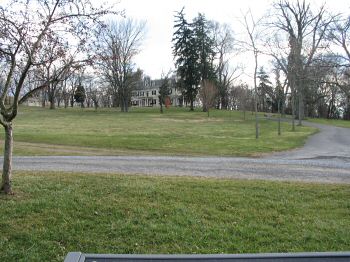 |
|
|
(September 2007) Gambrill, or Araby, Mill was built in the 1830s and at the time of the battle was owned by James H. Gambrill. Originally a three story structure with two flour milling stone sets, the structure was drastically altered over time to the two story building that served as the park visitor center until 2007. Nearby also were a sawmill, animal feed mill, and a plaster mill, all powered by a mill race along Bush Creek |
(September 2007) Enlarge Gambrill House was built well after the war in the 1870s by the mill complex proprietor. The house now serves as a park administrative office and training site for preservation professionals. So while the house did not witness any Civil War action itself, it's role in preservation of our Civil War heritage is marked |
|
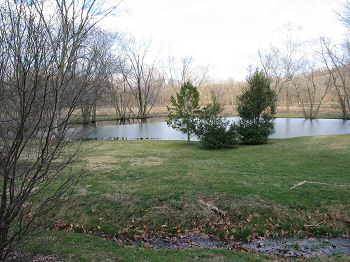 |
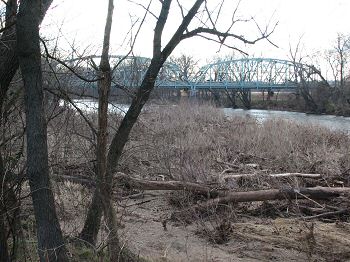 |
|
|
(September 2007) Enlarge Old mill pond at the Gambrill Mill is in the center of the Federal staging grounds during the battle. The site was perfectly suited to assembling the regiments as they were directed to either the bridges or the Thomas Farm to the south. High ground to the north afforded some protection and artillery positions but as the bridges fell, this portion of the Federal lines was compromised. A field hospital was established in this area during the battle |
(September 2007) Enlarge Site of the Georgetown Pike covered bridge seen from an overlook on the Gambrill Mill walking trail. The decision to fire the bridge, by General Wallace, did leave men stranded on the west bank, but was militarily prudent. Otherwise the base line of the Federal positions across the Thomas Farm would have been flanked well before the afternoon fighting. As events unfolded, only one of Early's divisions were fully committed to fighting on the east side of the river - Gordon's. A fine example of a smaller, being the Federal force, using the terrain to advantage |
|
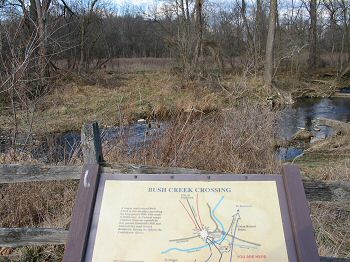 |
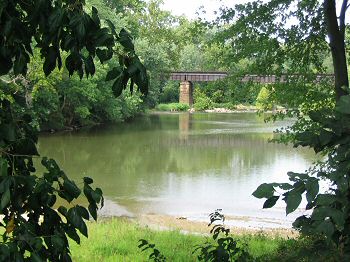 |
|
|
(September 2007) Enlarge Looking to the north across Bush Creek is the path of the Federal retreat. Late in the afternoon as the defensive lines collapsed, the Federals fell back through here to the Old National Road and ultimately headed towards Baltimore |
(September 2007) Enlarge View of the railroad bridge in the summer. Damages to the bridge during the battle cost $12,700 to repair, but the span was back in operation by July 17th, allowing troops to be forwarded to Harpers Ferry in pursuit of General Early's forces withdrawing from Washington. The repairs cost just a little more than similar repairs to the same bridge following the September 1862 Confederate invasion - just over $11,000. Because of the network of road and railroad routes around Monocacy Junction, the location was continually used by Federal forces throughout the late summer and fall of 1864. In August, General Grant met with General Sheridan at the Thomas Farm to discuss the command of the Middle Division (Shenandoah Valley) and how operations should be prosecuted against Early's command |